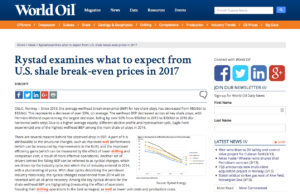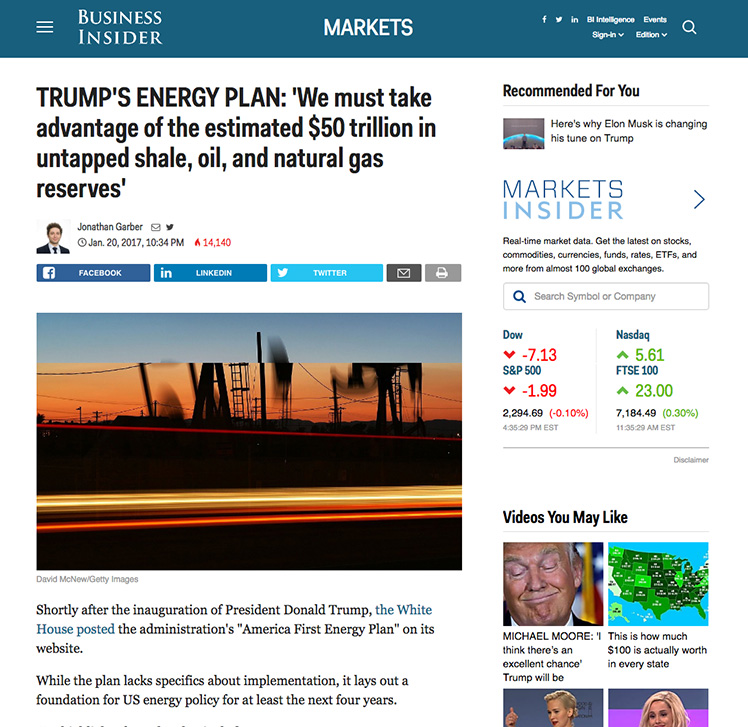U.S. Department Of Defense Moves Ahead With Green Energy 03/01/17 •lweb.es/f2640 •bit.ly/2ocvx54
The largest U.S. government agency – the Department of Defense, which is also the world’s largest single petroleum buyer – plans to forge ahead under the new administration with a decade-long effort to convert its fuel-hungry operations to renewable power. Why? In combat zones, green energy saves lives. The military’s zeal for renewable power has already had broad impacts on energy contractors, generating hundreds of millions of dollars in contracts for solar companies and helping to reduce fuel consumption. Trump’s Secretary of Defense, Jim Mattis, has long supported efforts to reduce troop dependence on petroleum.


 Since 2013, the average wellhead break-even price (BEP) for key shale plays has decreased from $80 a barrel to $35/bbl. This represents a drop of over 55%, on average. The wellhead BEP decreased across all key shale plays, with Permian Midland falling by over 60% from $98/bbl in 2013 to $38/bbl in 2016 (for horizontal wells only). Rystad Energy forecasts an average WTI oil price of $60/bbl, which implies a 40% improvement in the cash from operations. This improvement will result in higher investments of the shale operators.
Since 2013, the average wellhead break-even price (BEP) for key shale plays has decreased from $80 a barrel to $35/bbl. This represents a drop of over 55%, on average. The wellhead BEP decreased across all key shale plays, with Permian Midland falling by over 60% from $98/bbl in 2013 to $38/bbl in 2016 (for horizontal wells only). Rystad Energy forecasts an average WTI oil price of $60/bbl, which implies a 40% improvement in the cash from operations. This improvement will result in higher investments of the shale operators.